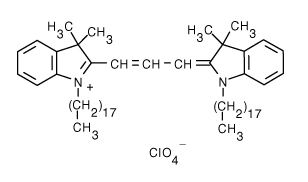 | ||
High on fire dii
DiI, pronounced like Dye Aye, also known as DiIC18(3), is a fluorescent lipophilic cationic indocarbocyanine dye which is usually made as a perchlorate salt. It is used for scientific staining purposes such as single molecule imaging, fate mapping, electrode marking and neuronal tracing (as DiI is retained in the lipid bilayers).
Contents
- High on fire dii
- High on fire dii live roadburn april 20th 2013
- Name and Chemical Structure
- Derivatives and Analogs
- Physical Properties
- References
DiI is manufactured by Invitrogen, which has a series of long-chain lipophilic carbocyanine dyess, of which DiI is one of the most well researched members. Some prominent members of the series includes: DiI, also called DiIC18(3); DiO, also called DiOC18(3); DiD, also called DiIC18(5); and DiR, also called DiIC18(7), which exhibit distinct orange, green, red and infrared fluorescence, respectively, and all have the following useful properties:
High on fire dii live roadburn april 20th 2013
Name and Chemical Structure
The "Di" possibly stands for the di-alkyl nature and the "I" of DiI possibly stands for the "indocarbocyanine" group (which it shares with D383, D384, D3886, D3899, D3911, D7756, D7776, D7777, D12730, N22880). The full chemical name of this major member of the group is 1,1'-dioctadecyl-3,3,3'3'-tetramethylindocarbocyanine perchlorate, the chemical formula is C59H97ClN2O4 It has 18-carbon-long straight alkyl hydrocarbon tails on each on the nitrogen (Position 1) of the two indoline rings, a conjugated 3-carbon bridge connecting the 2nd positions (Carbon) on the rings symmetrically, and two methyl groups each on each of the 3rd positions (carbon) of the two rings. The longer names e.g. DiIC18(3) mention the length of the alkyl chain (e.g. 18) and the length of the conjugated bridge between the aromatic rings e.g. 3.
Derivatives and Analogs
DiI has several derivtives and analogs in use:
Physical Properties
The dye (DiIC18(3)) is a violet crystal that is soluble in ethanol, methanol, dimethylformamide, and dimethylsulfoxide. The crystal form of the dye has melting point of 68 °C (at which it decomposes). The dye had an absorption maximum at 549 nm and an emission maximum 565 nm similar to tetramethyl rhodamine. It is mildly fluorescent in aqueous suspension, but becomes bright when bound to cell membrane. Once bound to a membrane it diffuses laterally in 2 dimensions; if there is no diffusion barrier, DiI generally stains the whole leaflet (one surface) of a biological membrane rapidly, but does not readily flip across to the other leaflet.
